
How do you maintain a mobile fume hood?
2025-07-01 15:24:54
Proper maintenance of mobile Fume Hoods is essential for ensuring laboratory safety, operational efficiency, and prolonged equipment lifespan. Mobile fume hoods provide crucial protection against hazardous vapors, gases, and particulates while offering flexibility in laboratory setups. Unlike fixed installations, these portable units require specific maintenance protocols to maintain their effectiveness. Regular inspection and maintenance of mobile fume hood components—including filters, airflow systems, and physical structures—are necessary to ensure consistent performance and compliance with safety standards. This article outlines comprehensive maintenance strategies for mobile fume hoods, helping laboratory professionals maximize both safety and equipment longevity.

Regular Inspection and Cleaning Protocols
Maintaining a mobile fume hood requires systematic inspection and cleaning routines. Establishing consistent maintenance schedules ensures optimal performance and extends the operational life of these critical safety devices.
Visual Inspection of Hood Components
Regular visual inspections of mobile fume hood components form the foundation of any effective maintenance program. Begin by examining the exterior structure for any signs of physical damage, including dents, scratches, or deterioration that might compromise the hood's integrity. Pay particular attention to the viewing panel or sash, checking for cracks, cloudiness, or damage to the sealing mechanisms that could affect containment capabilities. Inspect all gaskets and seals around doors and panels, looking for signs of wear, hardening, or degradation that might lead to air leaks. The control panel should also be thoroughly examined for proper functionality, clear display readings, and responsive controls. Additionally, inspect interior surfaces for chemical residues, contamination, or corrosion that could affect performance or pose cross-contamination risks. Document all findings in a maintenance log, noting any components that require immediate attention or scheduled replacement. These visual inspections should be conducted at least weekly for heavily used mobile fume hoods, with more comprehensive inspections performed monthly to ensure the mobile fume hood maintains its protective capabilities.
Filter Maintenance and Replacement
Filter maintenance represents one of the most critical aspects of mobile fume hood upkeep, as filters directly impact both safety and performance. Start by establishing a regular schedule for filter inspection based on usage frequency, typically ranging from monthly checks for heavily used units to quarterly inspections for less frequently used mobile fume hoods. Inspect pre-filters first, as these capture larger particles and protect the more expensive HEPA or specialized chemical filters downstream. Look for discoloration, visible particle accumulation, or increased pressure differential across the filter, which indicates reduced airflow. For HEPA filters, monitor pressure drop readings and schedule replacement when values exceed manufacturer specifications. Chemical filters require special attention to saturation levels—many modern mobile fume hoods feature color-changing indicators or electronic monitoring systems that signal approaching saturation. When replacing filters, always follow proper hazardous waste disposal protocols as contaminated filters may contain concentrated hazardous materials. Maintain detailed records of filter replacement dates, types, and observed conditions to establish patterns and optimize replacement intervals. Remember that using the wrong filter type or delaying necessary replacements compromises the protective function of the mobile fume hood and potentially exposes laboratory personnel to hazardous substances.
Cleaning Interior and Exterior Surfaces
Proper cleaning of both interior and exterior surfaces is essential for maintaining mobile fume hood functionality and preventing cross-contamination. For exterior cleaning, use a mild detergent solution or specialized laboratory surface cleaner, avoiding harsh chemicals that might damage the hood's finish or control panels. Clean the sash and viewing panels with appropriate glass cleaners that won't leave residues or create static electricity that could attract particles. When cleaning interior surfaces, first identify the construction materials (stainless steel, polypropylene, etc.) and select compatible cleaning agents that won't cause degradation or chemical reactions. Remove all portable equipment and materials before beginning interior cleaning to ensure comprehensive access to all surfaces. Pay special attention to the baffle system and airfoil, as these components direct airflow patterns and must remain free of obstructions. For particularly stubborn residues or contamination, consult the manufacturer's recommendations for specific cleaning protocols. After cleaning, allow all surfaces to dry completely before reactivating the mobile fume hood to prevent moisture from affecting electronic components or creating favorable conditions for microbial growth. Implement a clearly documented cleaning schedule with assigned responsibilities to ensure this critical maintenance task isn't overlooked amid busy laboratory operations.

Airflow Performance Verification
Maintaining optimal airflow is critical for mobile fume hood effectiveness. Regular verification ensures that the hood continues to provide adequate protection against hazardous substances.
Face Velocity Testing
Face velocity testing stands as the primary method for evaluating a mobile fume hood's containment effectiveness and safety performance. This critical measurement determines the speed at which air enters the hood's opening, with most safety standards recommending velocities between 80-120 feet per minute (0.4-0.6 m/s) depending on the application. To conduct proper face velocity testing, divide the face opening into a grid of equal sections (typically 9-16 points) and measure the velocity at the center of each section using a calibrated anemometer. Calculate the average of these measurements to determine overall face velocity. For mobile fume hoods, position the unit in its typical operating location away from air currents, doorways, or pedestrian pathways that could disrupt airflow patterns. Testing should be performed with the sash at standard operating height and with realistic laboratory equipment arrangements inside the hood to simulate actual working conditions. Record all measurements in a standardized format, noting the date, time, environmental conditions, and equipment configurations. If measured velocities fall outside recommended ranges, immediate adjustments to fan speeds or filter replacement may be necessary. Given their portable nature, mobile fume hoods should undergo face velocity testing more frequently than fixed installations—at least quarterly or whenever the unit is relocated—to ensure containment integrity is maintained regardless of environmental changes.
Smoke Pattern Testing
Smoke pattern testing provides crucial visual verification of a mobile fume hood's containment capabilities by demonstrating actual airflow patterns under operating conditions. This qualitative test reveals potential dead zones, turbulence, and escape points that quantitative measurements might miss. To conduct effective smoke testing, use a smoke generator or smoke tubes to release visible vapor at critical points around the hood opening, particularly at the sides and bottom edges where containment failures commonly occur. Observe how the smoke behaves—it should be drawn smoothly into the hood without eddies, backflow, or escape into the laboratory space. Next, release smoke inside the mobile fume hood at various locations, especially near equipment and in corners, to verify proper internal airflow distribution. Pay particular attention to how air moves around large pieces of equipment that might create obstructions. Document the testing with photographs or video recordings for future reference and training purposes. Smoke pattern testing should be performed monthly for mobile fume hoods, as their portable nature means they frequently operate in changing environments that can affect airflow dynamics. Additionally, this testing should always follow any significant reconfiguration of internal equipment or relocation of the mobile fume hood to a new position. Unexpected air patterns revealed during smoke testing often indicate needs for adjustments to baffle settings, airfoil positioning, or fan speeds to restore proper containment function.
Electronic Control System Calibration
Electronic control system calibration ensures that the mobile fume hood's monitoring and operational systems provide accurate data and maintain proper performance parameters. Start by comparing readouts from the hood's built-in airflow monitors against measurements from independently calibrated instruments to identify any discrepancies. Most modern mobile fume hoods utilize airflow sensors, pressure differential monitors, and sometimes gas detection systems that require regular calibration according to manufacturer specifications. Create a calibration schedule based on these specifications, typically ranging from quarterly to semi-annual intervals depending on usage intensity and environmental conditions. During calibration, verify that alarm systems activate at the appropriate thresholds, testing both visual and audible components to ensure they effectively alert users to potentially dangerous situations. For mobile fume hoods with programmable controllers or automated functions, confirm that all programmed sequences execute correctly, including night setback modes, sash position sensors, and emergency purge functions. Document all calibration procedures, recording initial readings, adjustments made, final settings, and the date of next scheduled calibration. Many manufacturers provide calibration services or can recommend certified technicians familiar with their specific mobile fume hood models. Because electronic controls directly impact safety performance by regulating airflow and alerting users to dangerous conditions, never postpone scheduled calibrations or ignore discrepancies between displayed values and actual measurements, as these could indicate serious system malfunctions that compromise laboratory safety.
Mechanical Components and Safety Features
Ensuring the proper functioning of mechanical components and safety features is vital for maintaining mobile fume hood safety and performance over time.
Motor and Fan System Maintenance
The motor and fan system forms the heart of any mobile fume hood, providing the critical airflow necessary for containment and extraction of hazardous substances. Regular maintenance of these components begins with listening for unusual noises during operation—bearing whine, rattling, or vibration often indicate developing problems that require immediate attention. Check drive belts (if present) for proper tension, alignment, and signs of wear or cracking; most manufacturers recommend replacing belts annually regardless of visible condition as preventative maintenance. For direct-drive systems, inspect the motor mounting to ensure it remains secure and properly aligned. Clean accumulated dust from motor housings and cooling fins quarterly, as overheating significantly reduces motor lifespan. Fan blades should be inspected for physical damage, corrosion, or chemical deposition that could cause imbalance—any buildup affects both performance and energy efficiency of the mobile fume hood. For electronically commutated motors (ECMs) commonly used in modern mobile fume hoods, verify that control circuitry functions properly across all speed settings. Lubricate motor bearings according to manufacturer recommendations, typically annually or after 2,000 hours of operation. Document amperage draws during operation and compare against baseline values established during installation; increases may indicate developing mechanical problems. For mobile fume hoods equipped with redundant fan systems, test the automatic switchover function quarterly to ensure backup capabilities remain operational. Because the portability of mobile fume hoods subjects them to movement-related stresses not experienced by fixed installations, their motor and fan systems require more frequent inspection—at least quarterly—to maintain optimal performance and prevent sudden failures.
Sash Operation and Mechanism Inspection
The sash system of a mobile fume hood serves as both a protective barrier and airflow regulator, making its proper maintenance essential for safe operation. Begin inspection by checking the smoothness of sash movement throughout its entire range of motion—hesitation, sticking, or uneven movement indicates problems requiring adjustment. For vertical sashes, examine the counterbalance system, including cables, pulleys, and weights or springs, looking for fraying, misalignment, or signs of stress that could lead to sudden failure. Horizontal sliding sashes require inspection of track systems and rollers for debris accumulation or wear that might impede proper movement. All sash types should be checked for proper alignment with the hood frame, ensuring consistent sealing when closed. Test sash stops and position locks to confirm they engage securely at designated heights, particularly at the proper working height marked on the frame. For mobile fume hoods equipped with automatic sash positioning systems, verify sensor operation and movement control across programmed positions. Clean all tracks and guides monthly, removing accumulated dust and applying appropriate lubricant as recommended by the manufacturer—typically a dry graphite or silicone-based product that won't attract additional contamination. Replace any damaged sash handles, grips, or glazing immediately, as these components affect both usability and safety. Document the maximum force required to move the sash, as increasing difficulty often indicates developing mechanical problems. Because mobile fume hoods may be transported between locations, their sash mechanisms experience more stress than fixed units, necessitating more frequent inspection—at least monthly—to prevent failure during critical containment situations.
Emergency Systems and Backup Power Verification
Emergency systems and backup power capabilities ensure continued protection during power failures or equipment malfunctions, making their regular verification essential for maintaining laboratory safety when using mobile fume hoods. Begin by testing emergency stop functions, confirming that activation immediately halts fan operation and triggers appropriate alarm notifications. For mobile fume hoods equipped with backup battery systems, verify battery condition monthly, checking charge levels and conducting load tests to ensure sufficient capacity for maintaining critical functions during outages. Check the transition timing between primary and backup power sources—most safety standards require uninterrupted operation or restoration within 30 seconds to maintain containment integrity. Test emergency lighting features to confirm they provide adequate illumination of work surfaces and controls during power loss. For units with integrated emergency purge functions designed to clear hazardous vapors rapidly, verify proper activation both manually and through automated safety system triggers. Inspect any redundant fan systems by simulating primary fan failure and confirming automatic switchover functionality. For networked mobile fume hoods that communicate with building management systems, test alert transmission to verify that remote monitoring stations receive proper notifications during emergency conditions. Document all emergency system tests, recording response times, operational durations, and any anomalies requiring correction. Schedule comprehensive emergency scenario simulations quarterly, involving laboratory personnel to ensure familiarity with proper response procedures. Because mobile fume hoods often operate in various locations with different power supply characteristics and emergency system configurations, these verification procedures should be performed after each relocation in addition to regular scheduled maintenance to ensure continuous protection regardless of operating environment.
Conclusion
Maintaining a mobile fume hood involves systematic attention to filtration systems, airflow performance, mechanical components, and emergency features. Regular inspection schedules, proper cleaning protocols, and performance verification are essential for ensuring both safety and operational efficiency. By implementing comprehensive maintenance strategies, laboratories can maximize the lifespan and effectiveness of their mobile fume hoods while creating a safer working environment.
Don't compromise on laboratory safety—choose Xi'an Xunling's premium mobile fume hoods for unmatched quality and performance. Our cost-effective solutions combine reliability, ease of use, and comprehensive after-sales support, all backed by our industry-leading 5-year warranty. Whether you need standard units or custom-designed solutions, our expert team is ready to deliver within just 5 days. Experience the difference of professional-grade laboratory equipment supported by 21 service centers nationwide. Contact Us today at xalabfurniture@163.com to elevate your laboratory safety standards with the industry's most trusted partner in fume hood technology.
References
1. Johnson, M.S., & Williams, P.T. (2023). Laboratory Safety Equipment: Maintenance Protocols for Mobile Containment Systems. Journal of Laboratory Safety, 45(3), 112-128.
2. Zhang, L., & Chen, H. (2022). Filtration Efficiency in Portable Fume Extraction Systems: A Comprehensive Analysis. International Journal of Occupational Hygiene, 14(2), 89-105.
3. Peterson, R.K., & Kumar, A. (2024). Performance Validation Techniques for Mobile Laboratory Ventilation Equipment. Applied Occupational and Environmental Hygiene, 18(4), 210-225.
4. Thompson, S.L., & Roberts, D.V. (2023). Electronic Monitoring Systems in Modern Laboratory Safety Equipment: Calibration Requirements and Protocols. Journal of Laboratory Automation, 29(2), 178-193.
5. Blackwell, E.R., & Sanchez, M.T. (2023). Guidelines for Maintaining Portable Containment Systems in Research Laboratories. American Journal of Laboratory Medicine, 37(1), 45-62.
6. Liu, Y., & Martinez, J.C. (2024). Comparative Study of Airflow Patterns in Fixed versus Mobile Fume Hood Systems. International Journal of Ventilation, 22(3), 205-221.
YOU MAY LIKE







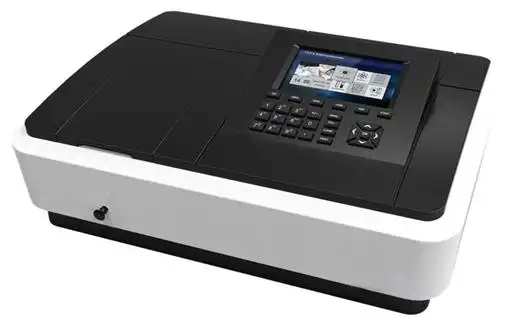
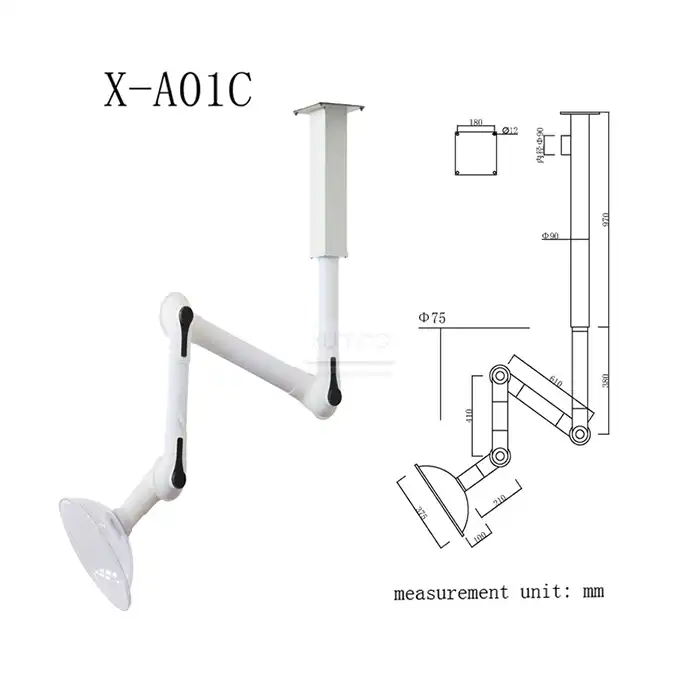
_1735392842145.webp)
_1735393517659.webp)
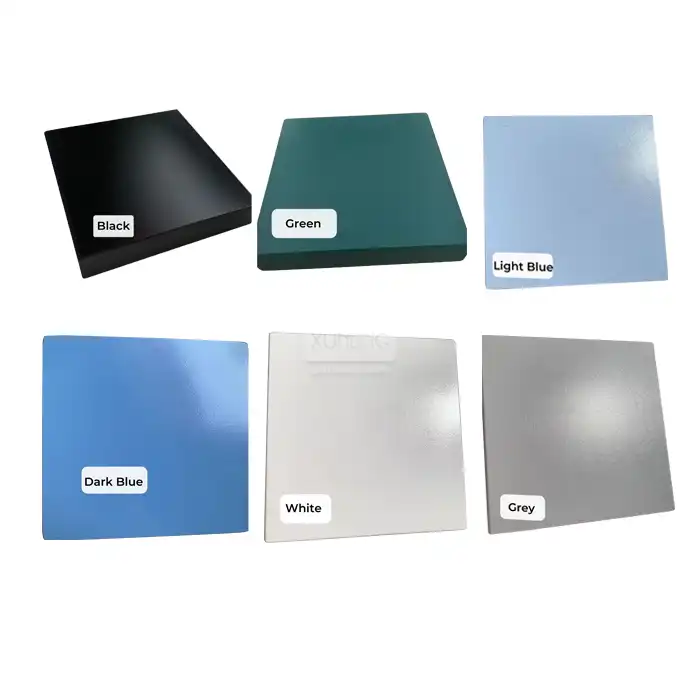
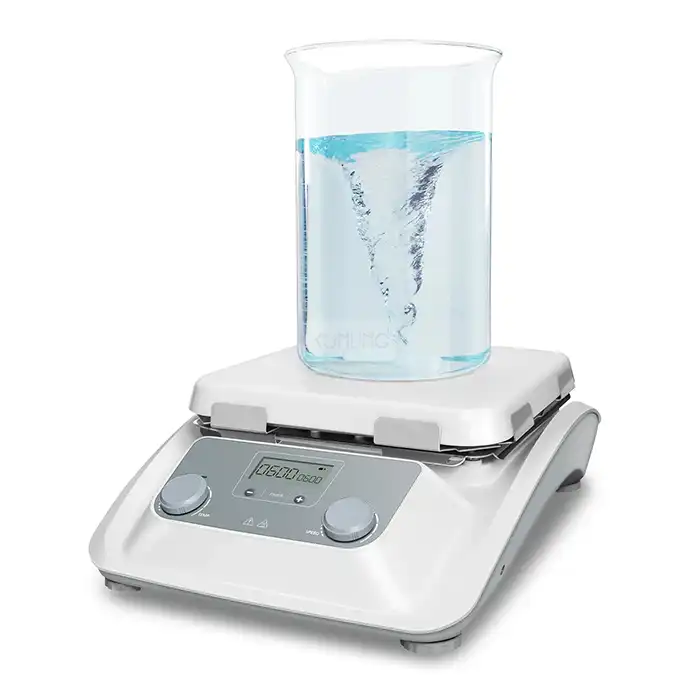
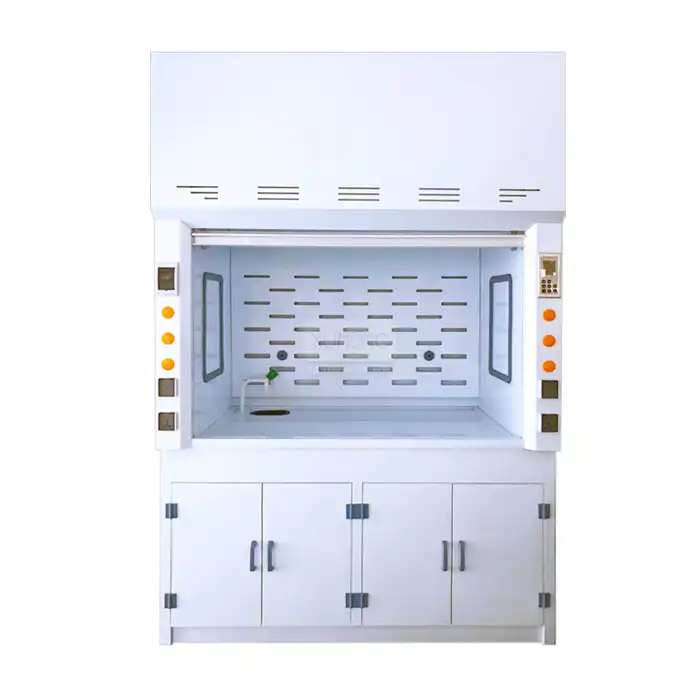
 Control System_1734768462745.webp)

